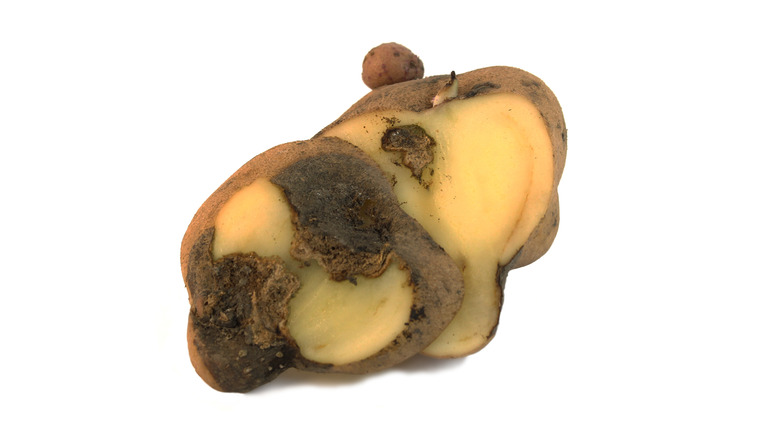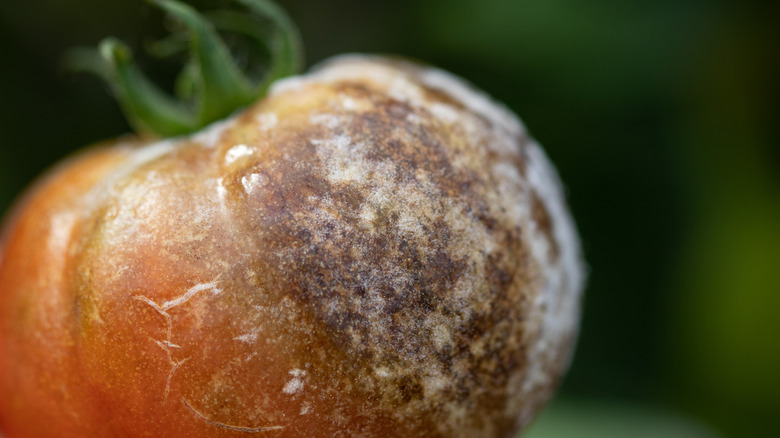How The Mold From The Irish Famine Decimates Potatoes
The Irish called it "an Gorta Mór" (the Great Hunger), and "an Drochshaol" (the Bad Times), seven brutal years that erased nearly a quarter of Ireland's population (via Timeline Index). The Irish Potato Famine killed roughly one million people and forced over a million more away from their homeland. It had far-reaching political and economic effects and directly contributed to the Irish Diaspora of the 19th and 20th centuries, marking both its national and international impact, per History. The devastation caused by the famine was a matter of untenable farming practices, government neglect, and an especially nasty mold.
The importance of potatoes in Irish cuisine cannot be overstated. From potato cakes at breakfast to colcannon at dinner, the Irish throughout history have built their diet around potatoes — at times to a dangerous degree. According to Timeline Index, roughly a third of the Irish population depended entirely on potatoes to sustain themselves. When those crops abruptly started to perish en masse in 1845, the effects were devastating, exacerbated by the ruling British government's failure to provide any aid. But what was that mass-murdering force that killed the crops in the first place?
Phytophthora infestans and its drought-like effects
The widespread crop failures that marked the beginning of an Gorta Mór were triggered by a type of mold called phytophthora infestans, which causes the disease 'late blight' or 'potato blight,' (via Britannica). Precisely how and when p. infestans got to Ireland is unclear. But according to the Proceedings of the National Academy of Sciences (PNAS), it likely originated in Mexico and arrived in Europe sometime in the early 1840s. Per Britannica, the mold thrives in humid climates, so when the summer of 1845 came, bringing especially high levels of humidity, p. infestans had a field day (via The Guardian).
Farmer's Weekly explains that p. infestans specifically attacks members of the nightshade family, including potatoes and tomatoes. It settles on leaves that have been moistened by rain or dew, where it rapidly multiplies. It takes days for the signs of rot to show. By the time you notice the infection, it's already too late. According to Britannica, the spores travel in the wind, and thus the disease spreads quickly. The University of California Statewide Integrated Pest Management Program (UC IPM) likens the symptoms of phytophthora infections to the signs of drought. The plant's leaves wilt, turning pale or sometimes purplish, and the fruit develops dark lesions. Phytophthora infestans still floats around in the air today. But UC IPM explains it is generally easy to manage by controlling water supply, practicing crop rotation, and occasionally resorting to fungicides.

